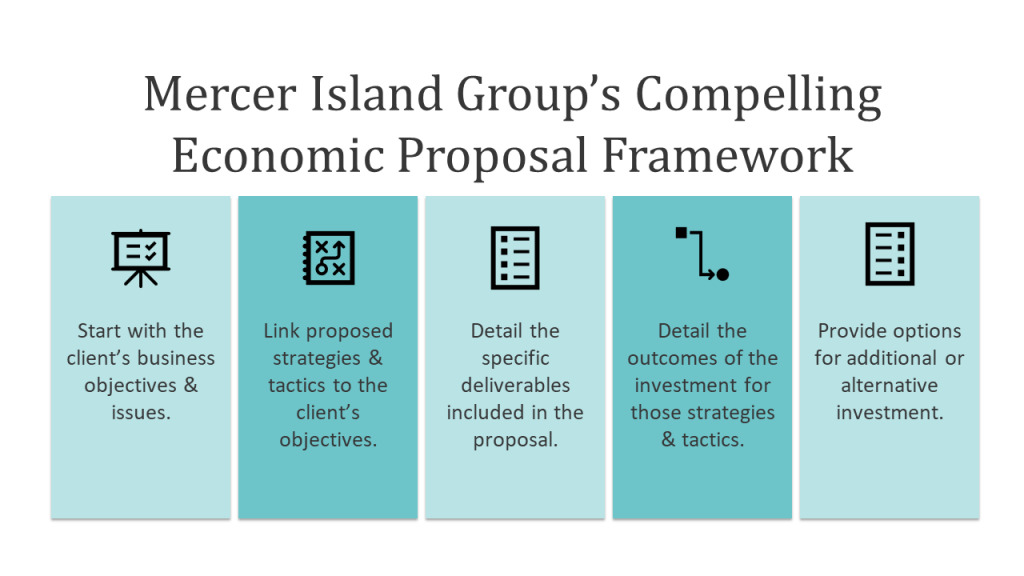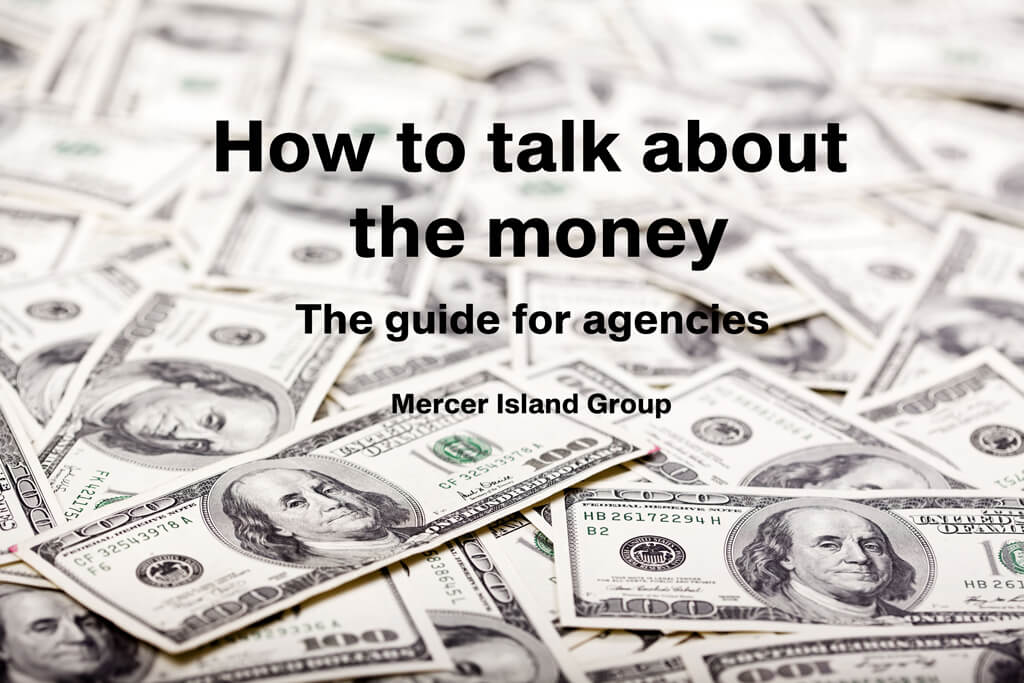Most agency executives and teams hate talking about money with clients and prospects. And they don’t do a very good job of it.
Agencies often seem to approach the topic of money as a required nuisance or as an afterthought. The agency’s economic proposal may be a simple spreadsheet. Or a spreadsheet embedded in a PDF or PowerPoint deck. Perhaps there is a list of tactics and the accompanying costs by tactic or simply a total cost. The result is often an economic proposal that appears to be disconnected from the real business issues of the client. And prospects end up having difficulty figuring out what they are really getting for their investment. The agency comes across generically. The client has the upper hand in negotiations.
There is a better way. A way where the topic of money becomes a forum to discuss your proposal strategically and to link outcomes to investment as opposed to simply presenting costs. A way to change the focus of the conversation to one that better serves both the agency and the prospect. A way that elevates the agency’s attractiveness.
How can that be done?
The key to talking about the money is to focus the conversation on the clients’ needs and their success and not just about the costs involved. Here’s a simple 5-step process that can turn the discussion of money into a compelling strategic sales tool:

- Start with the Client’s Business Objectives & Issues: This is the critical starting point, as no one wants to “buy marketing”. Clients have business issues and opportunities they need help with, and if an agency can help then the client may be open to investing in the agency’s help. Remind them of the goals before you address the necessary investment. For example, a travel client may have a business objective of +5% revenue growth and brand objectives of increasing awareness and specific reputation scores. Those objectives are the strategic starting point for the agency’s economic proposal. By starting with the business objectives and issues, the agency is speaking the language of the client. Start with what they want.
Link Proposed Strategies & Tactics to the Client’s Objectives: Now that you’ve reset the discussion around the client’s needs – speaking their language – it’s time to connect the dots. Illustrate how the strategies and tactics you are proposing link directly to their business issues, opportunities and goals.
This step is critical as it shows that the agency is building its entire plan around the client’s needs. And, indirectly, helps make a case for the criticality of the strategies and tactics because the client can’t miss on the linear connection between what they want to achieve for their business and the work that needs to be done.
Using the travel brand example, you may have identified specific strategies like a new brand awareness campaign, digital efforts highlighting the most frequently investigated travel experiences, and intercepting the consumer’s travel planning journey by partnering with ratings and review sites.
Once those strategies are clearly identified and it is obvious how they address the business and brand objectives, the next step is to showcase the key tactics that would deliver on each strategy. You may need new TV assets for the awareness campaign, or social creative highlighting the right travel experiences. The key is for each key tactic to naturally and logically flow from the strategies, which flow from the objectives.
- Detail the Specific Deliverables Included in the Proposal: Now that you’ve told a story about how you would help the client succeed by connecting your strategies and tactics to the key client brand and business objectives, we’re ready to share the specific deliverables and their cost. Perhaps the broadcast deliverables (for awareness) include 3-60’s and 6-30’s. Show them exactly what deliverables they are getting for their investment and how those deliverables naturally flow from the strategies and tactics.
- Detail the Outcomes of the Investment for those Strategies & Tactics: The final key point is to show how the proposed strategies and tactics will deliver the original objectives.
Provide Options for Additional or Alternative Investment: You’ve told a compelling story. Don’t stop there, however – also share some additional “bonus” ideas that help deliver even greater results. These are, in essence, potential scope additions. This step provides you the opportunity to have a strategic discussion with your client or prospect about greater scope (and results!).
Importantly, this step also clearly identifies items that are out of scope – helping your agency to manage scope creep down the road.
